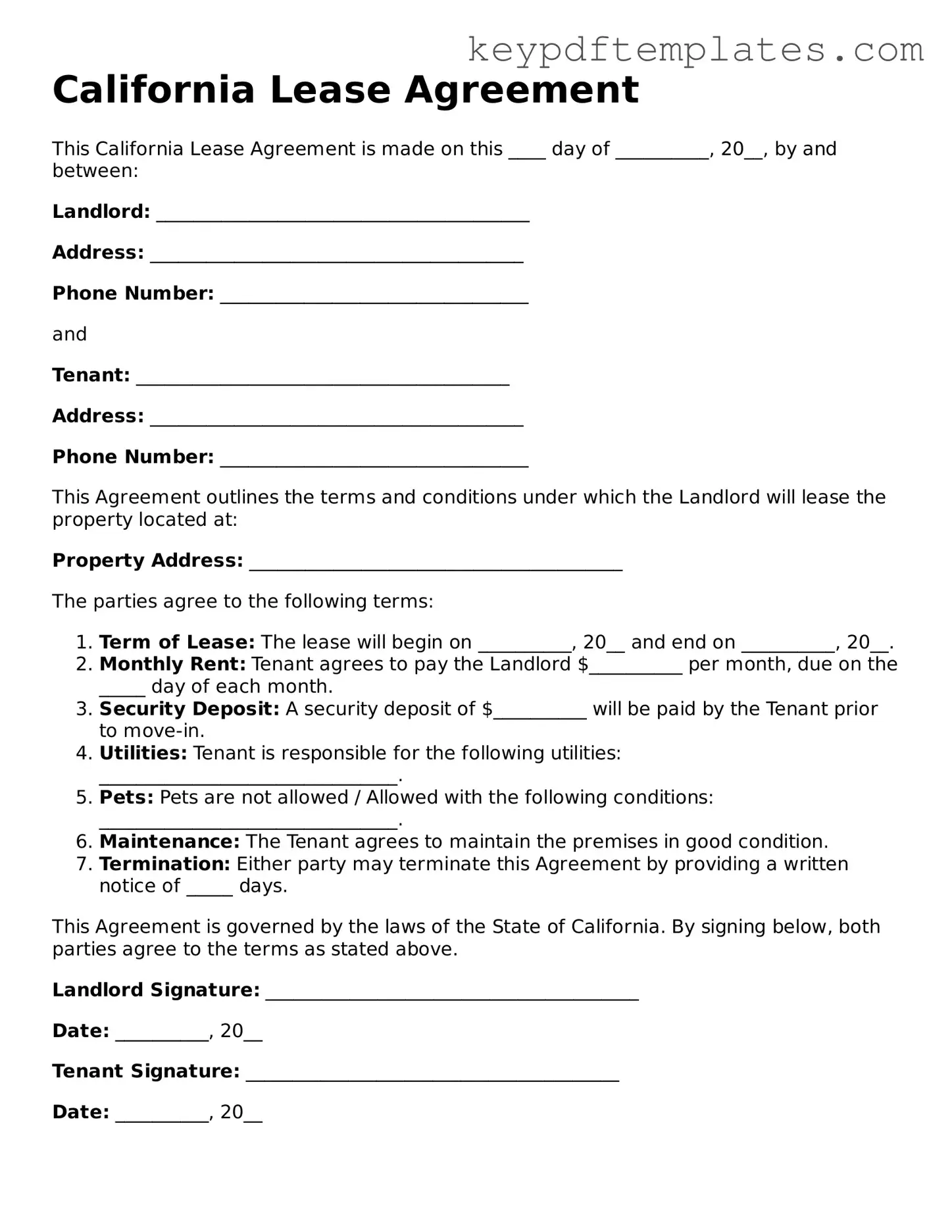Legal Lease Agreement Document for the State of California
The California Lease Agreement form is a legally binding document that outlines the terms and conditions under which a landlord rents property to a tenant. This form serves to protect the rights of both parties by clearly defining responsibilities, payment details, and other essential aspects of the rental arrangement. Understanding this document is crucial for anyone involved in renting property in California, as it sets the foundation for a successful landlord-tenant relationship.
Modify Document Online
